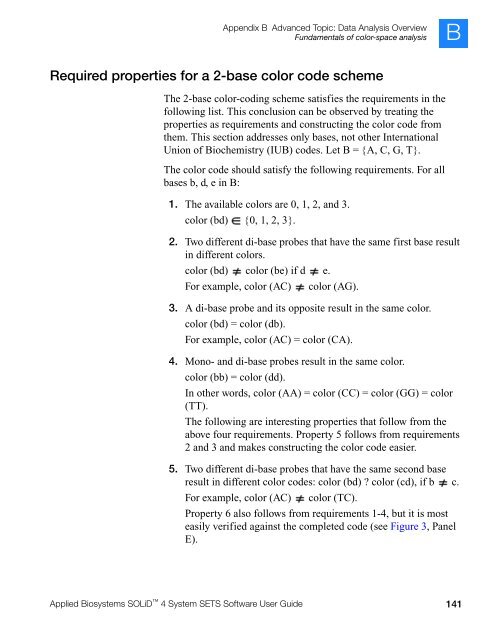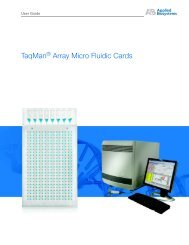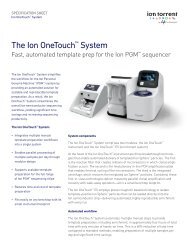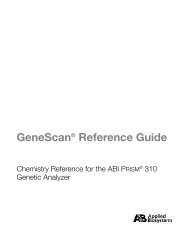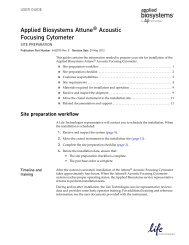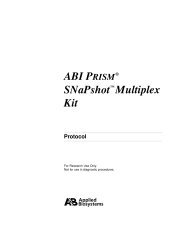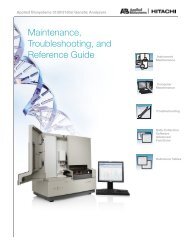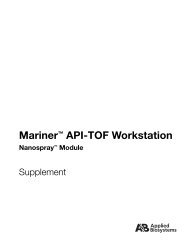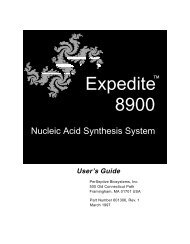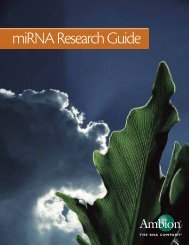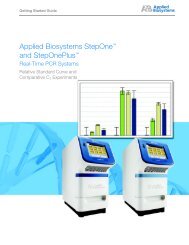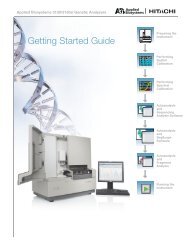Applied Biosystems SOLiD™ 4 System SETS Software User Guide ...
Applied Biosystems SOLiD™ 4 System SETS Software User Guide ...
Applied Biosystems SOLiD™ 4 System SETS Software User Guide ...
You also want an ePaper? Increase the reach of your titles
YUMPU automatically turns print PDFs into web optimized ePapers that Google loves.
<strong>Applied</strong> <strong>Biosystems</strong> SOLiD 4 <strong>System</strong> <strong>SETS</strong> <strong>Software</strong> <strong>User</strong> <strong>Guide</strong><br />
Appendix B Advanced Topic: Data Analysis Overview<br />
Fundamentals of color-space analysis B<br />
Required properties for a 2-base color code scheme<br />
The 2-base color-coding scheme satisfies the requirements in the<br />
following list. This conclusion can be observed by treating the<br />
properties as requirements and constructing the color code from<br />
them. This section addresses only bases, not other International<br />
Union of Biochemistry (IUB) codes. Let B = {A, C, G, T}.<br />
The color code should satisfy the following requirements. For all<br />
bases b, d, e in B:<br />
1. The available colors are 0, 1, 2, and 3.<br />
color (bd) {0, 1, 2, 3}.<br />
2. Two different di-base probes that have the same first base result<br />
in different colors.<br />
color (bd) color (be) if d e.<br />
For example, color (AC) color (AG).<br />
3. A di-base probe and its opposite result in the same color.<br />
color (bd) = color (db).<br />
For example, color (AC) = color (CA).<br />
4. Mono- and di-base probes result in the same color.<br />
color (bb) = color (dd).<br />
In other words, color (AA) = color (CC) = color (GG) = color<br />
(TT).<br />
The following are interesting properties that follow from the<br />
above four requirements. Property 5 follows from requirements<br />
2 and 3 and makes constructing the color code easier.<br />
5. Two different di-base probes that have the same second base<br />
result in different color codes: color (bd) ? color (cd), if b c.<br />
For example, color (AC) color (TC).<br />
Property 6 also follows from requirements 1-4, but it is most<br />
easily verified against the completed code (see Figure 3, Panel<br />
E).<br />
141


